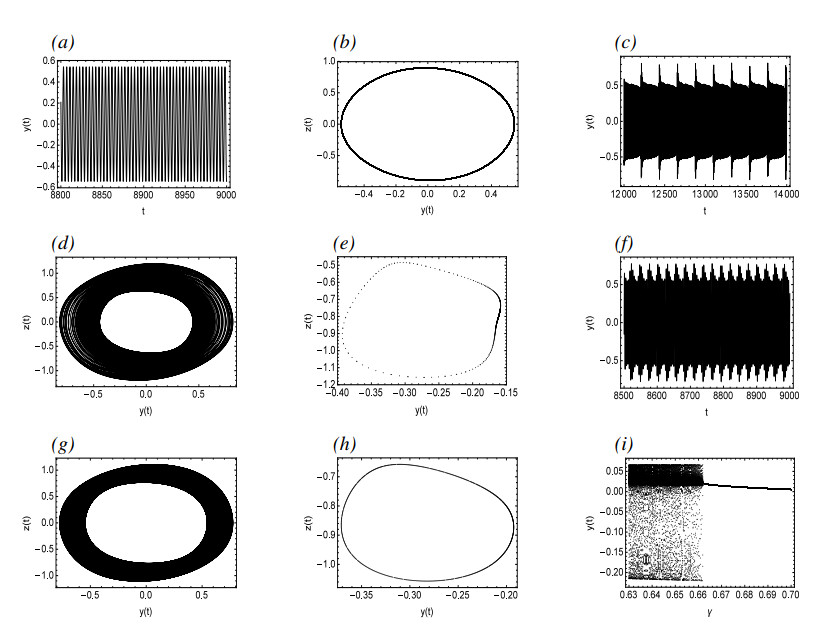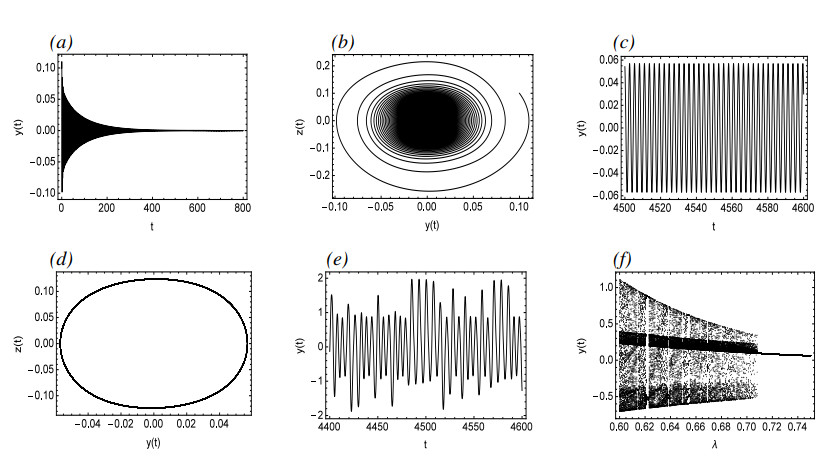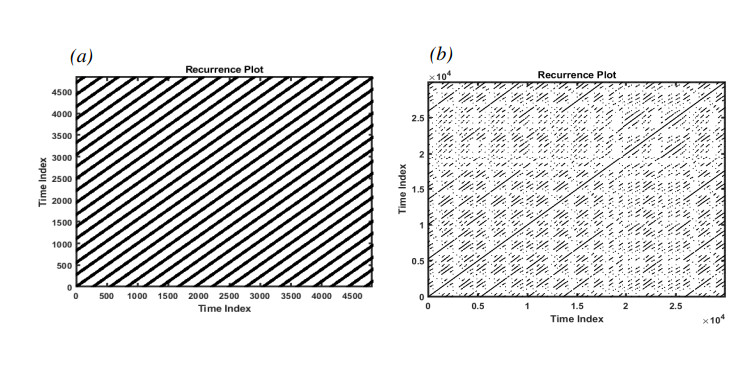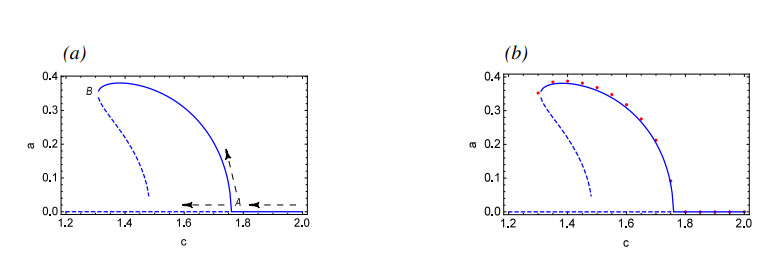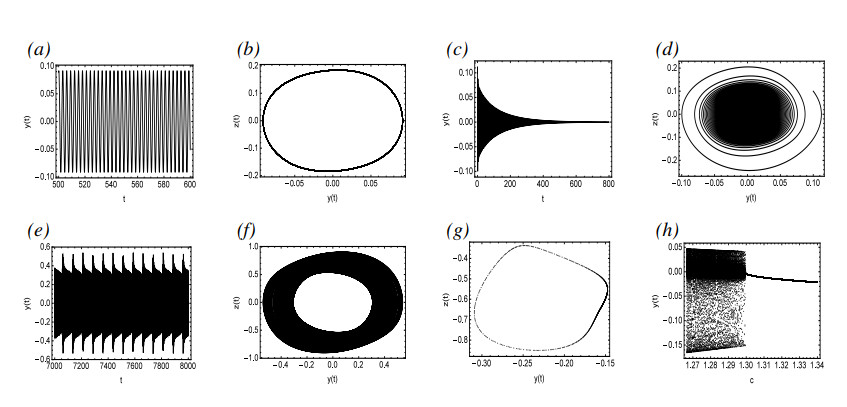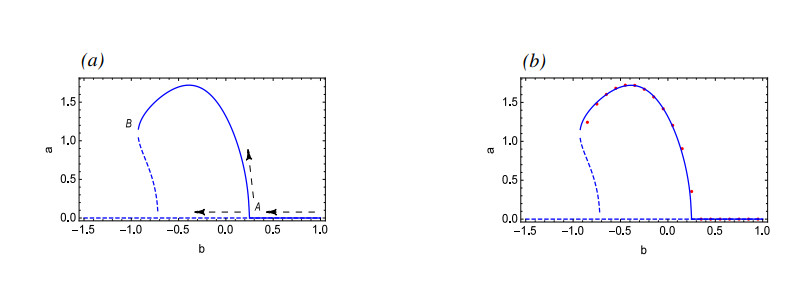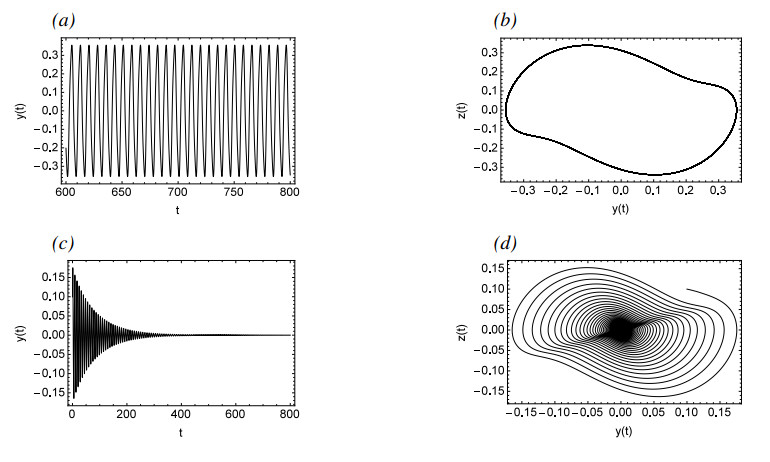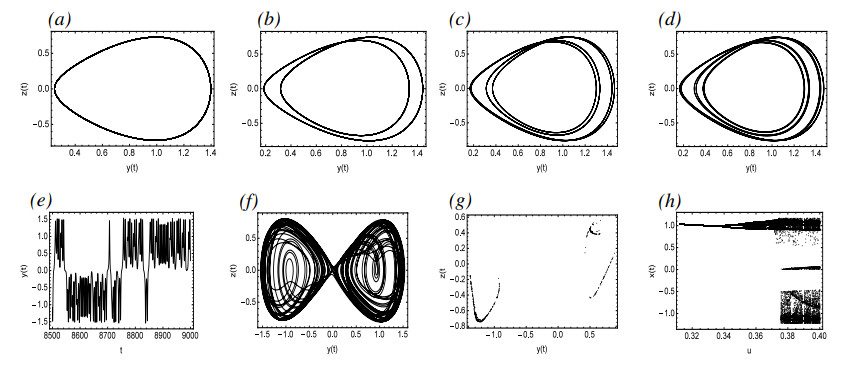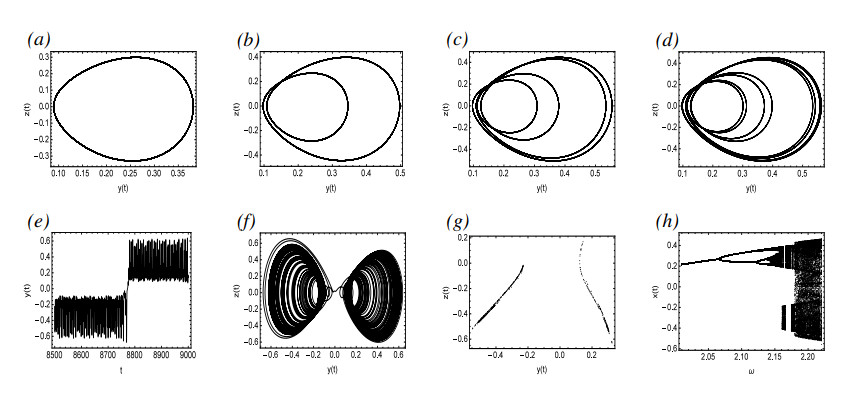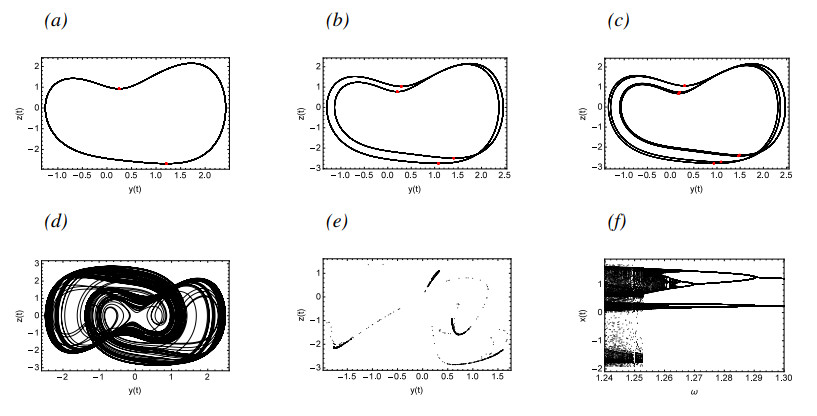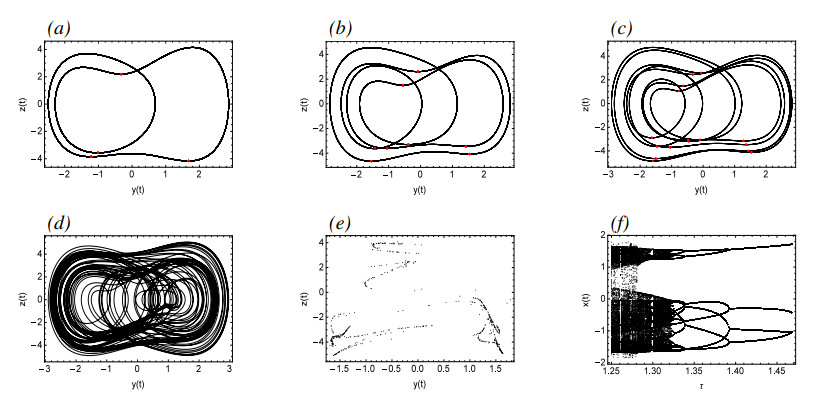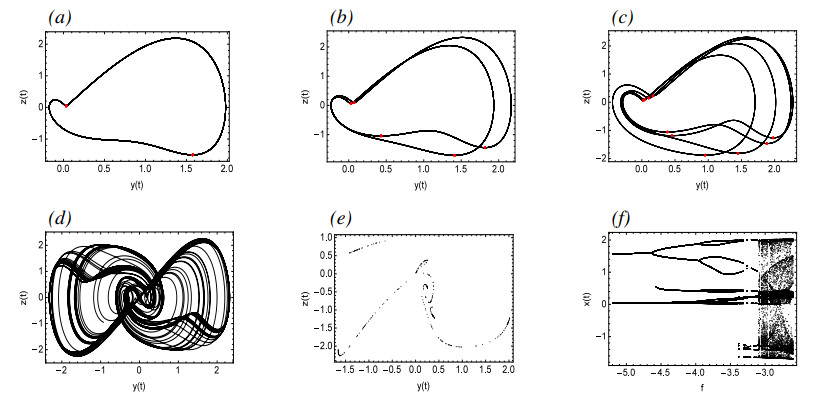1.
Introduction
Fractional calculus began with a legend in the 1800s there were two famous mathematicians, L' Hopital and Leibniz, who were discussing how to evaluate dnfdxn when n=12. In the 17th century, Leibniz published his book "Introductory Calculus", in which he talked about how to take derivatives of any function. After this brief discussion, the subject did not pick up much attention until 1819. Therefore, there was another time point when another famous mathematician by the name of Lacroix wrote another book; the book was on fractional calculus, where he started to develop the formulation for evaluating these derivatives. More specifically, Lacroix developed the fractional formula dαxmdxα for α and m being fractions. As a result, he found an answer to the famous question raised by L' Hopital and Leibniz, namely, what is the fractional derivative of a function of the order 12. The discussion did not end there, although Lacroix has shown an initial way to evaluate fractional derivatives, which has some problems. To mitigate the problems, there was another mathematician by the name of Liouville who extended the Lacroix definition. Liouville developed the formula for dαdxα(∑∞n=0cnexp(anx)) for Re(an)>0,cn∈R, and α being a fraction. Liouville also developed the formula for dαxmdxα for m<0 and α being a fraction.
Fractional calculus has proven to be a potent and effective mathematical tool in recent years, helping to define the intricate dynamics of real-world issues from a variety of scientific and engineering disciplines [1,2,3,4,5,6,7]. Every traditional fractional differential operator has a distinct kernel and can be applied to certain problems. For example, the Caputo-Fabrizio fractional operator is used in the linear viscoelasticity framework. The most popular operator for computing a fractional-order integral among a number of operators is the Riemann-Liouville fractional integral. It is basically just a straightforward adaptation of the Cauchy formula from classical calculus for repeated integration. However, over the past half decade, a number of operators for fractional-order integrals and derivatives have been put out. These new operators are believed to arise because of the singularity in the kernel of the Riemann-Liouville integral at one endpoint of the integration interval [0,T]. It originates from the new fractional operator, in which the integral involves the non-singular kernel.
The main motivation of the Caputo-Fabrizio integral and derivative operator is that it is a generalization of classical integral and derivative. One of the characteristics that sets the operator apart from others is its kernel, which is essentially a real power transformed into an integral using the Laplace transform. As a result, finding an accurate answer to many issues is simple. An increasing number of mathematicians working in the applied sciences are using the Caputo-Fabrizio fractional integral operator to model their problems. For additional details, see [8,9,10,11]. The main benefit of the Caputo-Fabrizio integral operator is its ability to admit the same form for the boundary condition of fractional differential equations with Caputo-Fabrizio derivatives as it does for differential equations of integer order. For studying fractional differential equation solutions, fractional integral inequalities are crucial, particularly for determining the uniqueness of initial value problems. Using a function's convexity is one of the most effective techniques to establish integral inequalities. In fact, advances in the theory of convex functions are closely related to the development of mathematical inequalities. Convexity theory provides a powerful and efficient way to address a wide range of problems in different fields of pure and applied mathematics. The most well-known and fascinating outcome of the convex function is the Hermite-Hadamard integral inequality. The classical Hermite-Hadamard inequality, which provides us with an estimation of the mean value of a convex function f:I⊆R→R for a1,a2∈I with a1<a2,
The geometrical relevance of this inequality led to its expansion, generalization, or improvement through the application of basic analytical procedures. Over the last few years, many mathematicians who have researched in this field have contributed to its development and made attempts to strengthen its modification in many ways [12,13,14,15].
Bullen [16] proved the inequality by giving the bound for the mean value of a convex function f:I⊆R→R for a1,a2∈I with a1<a2,
We can observe that the right side of the Hermite-Hadamard inequality should be viewed as an extension of Bullen's inequality. Bullen's inequality holds a significant position in theory, as do other classical inequalities like Jensen, Ostrowski, and Hermite-Hadamard. Numerous fields, including numerical integration, midpoints, and trapezoidal quadrature rules, can benefit from its application. For more current findings about the extension and improvement of Bullen-type inequality, see [17,18,19,20,21].
The paper is organized in the following way: After this introduction in Section 2 we have discussed some basic related concepts, in Section 3 main results, in Section 4 numerically solved examples and their graph, in Section 5 applications to some extent, and in the last Section 6 conclusion of the whole paper.
2.
Preliminaries
Some foundational ideas that are useful in understanding our main results are covered in this section.
Definition 1. [22] Let f∈H1(m1,m2), α∈[0,1], then the fractional integrals in the sense of Caputo and Fabrizio are defined by:
provided that, B(α)>0 is a normalization function satisfying B(0)=B(1)=1.
Theorem 1. [23] Let f:[m1,m2]⊆R→R be a convex function on [m1,m2] such that xi∈[m1,m2], αi∈[0,1] with ∑ki=1αi=1, 1≤i≤k, then
Proposition 1. [24] Let f:[m1,m2]⊆R→R+ be a log−convex function on [m1,m2] such that xi∈[m1,m2], αi∈[0,1] with ∑ki=1αi=1, 1≤i≤k, then Jensen-Mercer inequality is defined by:
Before going on, we make the following assumption:
3.
Main results
Lemma 1. Let h:I⊆R+→R be a differentiable function on I∘ (the interior of I), where m1,m2∈I∘ with m1<m2, v∈N; let w∈[u1,u2]; u1,u2∈[m1,m2] such that u1≤m1+m22≤u2, ς∈(0,1], d∈[0,1]. If h′∈L1[m1,m2], then
Proof. Integrating by parts the identity (2.3)
setting z=(v−i−1){m1−tm1+m22−(1−t)u1}+i{m2−tu2−(1−t)(m1+m2)2}+w, so that dt=dz(v−i−1)(u1−m1+m22)+i(m1+m22−u2), and when t=0, z=(v−i−1)(m1−u1)+i(m2−m1+m22)+w, and when t=1, z=(v−i−1)(m1−m1+m22)+i(m2−u2)+w.
Multiplying both sides by ς((1−v)(2u1−m1−m2)+i(2u1+2u2−2m1−2m2))B(ς) and adding 1−ςB(ς)h(2(v−1)(m1−u1)+i(m2−3m1+2u1)+2w2)
Now by the definition of Caputo-Fabrizio fractional operator
which completes the proof of (3.1). □
Remark 1. In particular for v=2, identity (3.1) in Lemma 1 reduces to the following identity:
provided that
Moreover, for u1=m1, u2=m2, w=m1+m22 and d=12, it reduces to the following identity:
and further for ς=1, it reduces to Lemma 2.1 of Xi and Qi[25].
Theorem 2. Let h:I⊆R+→R be a differentiable function on I∘ (the interior of I), where m1,m2∈I∘ with m1<m2; let w∈[u1,u2], u1,u2∈[m1,m2] such that u1≤m1+m22≤u2, ς∈(0,1], d∈[0,1]. If |h′|a is convex and h′∈L1[m1,m2], a≥1, then
Proof. For a>1, by using the basic properties of modulus, Hölder integral inequality, convexity of |h′|a, and relation (2.1) in Theorem 1 to identity defined by (3.2), we have
Similarly
Multiplying (3.5) and (3.6) by, respectively, m1+m2−2u14 and 2u2−m1−m24, then addition yields
For a=1, by using basic properties of modulus, convexity of |h′|, and relation (2.1) in Theorem 1 to identity defined by (3.2), we have
Similarly
Multiplying (3.8) and (3.9) by, respectively, m1+m2−2u14 and 2u2−m1−m24, then addition yields
A combination of (3.7) and (3.10), yields the desired result (3.4). This completes the desired result. □
Theorem 3. Let h:I⊆R+→R be a differentiable function on I∘ (the interior of I), where m1,m2∈I∘ with m1<m2; let w∈[m1,m2], ς∈(0,1], d∈[0,1]. If |h′|a is log-convex and h′∈L1[m1,m2], a≥1, then
provided that α=|h′(m1)h′(m2)|a2,
Proof. By power mean inequality and log−convexity of |h′|a to identity defined by (3.2), we have
Similarly
Multiplying both (3.12) and (3.13) by m2−m14, yields the desired result. □
An observation about the equality of the functional value of the the mean position and mean position of the functional values comes to mind, that is, for a real valued function h:[m1,m2]⊆R→R
The affirmative answer about the validity of (3.14) was given by Xi and Qi [25] by the function h(t)=±t3−9t2+27t3, t∈[1,5].
Corollary 1. Let h:I⊆R+→R be a differentiable function on I∘ (the interior of I), where m1,m2∈I∘ with m1<m2. If |h′|a is convex and h′∈L1[m1,m2], a≥1, then
Proof. The proof directly follows by setting u1=m1, u2=m2, d=12, w=m1+m22 in Theorem 2. □
Corollary 2. Let h:I⊆R+→R be a differentiable function on I∘ (the interior of I), where m1,m2∈I∘ with m1<m2. If |h′|a is log−convex and h′∈L1[m1,m2], a≥1, then
Proof. The proof directly follows by setting u1=m1, u2=m2, d=12, w=m1+m22 in Theorem 3. □
Remark 2. For ς=1, Corollaries 1 and 2 coincides with Theorems 3.2 and 3.7 of Xi and Qi [25] respectively.
In particular, under the relation (3.14), the left sides in (3.15) and (3.16) can be replaced by the relations either (3.17) or (3.18) to get trapezoidal type inequality or midpoint type inequality
4.
Analysis in numbers and graphics
In order to better grasp the theoretical results, we go over the numerical and graphical analysis of our main results in this part. Tables and figures in each example are unrelated to one another. Both sets of statistics were selected at random. The table and graphic in each case demonstrate that the inequality's left-hand side is less than or equal to its right-hand side, according to the corresponding theorem.
Example 1. Let h(t)=25√t5 be such that t∈[0,∞) and ς=a=1. In Table 1, we compute the values from result (3.4) of Theorem 2. Furthermore, the validity of result (3.4) of Theorem 2 is graphically shown in Figure 1 by considering h(t) with the following values: m1=3, u1=5, w=18, u2=20, 20≤m2≤30, 0≤d≤1, a=7.
Example 2. Let h(t)=expt be such that t∈(0,∞) and ς=1. In Table 2, we compute the values from result (3.11) of Theorem 3. Furthermore, the validity of result (3.11) of Theorem 3 is graphically shown in Figure 2 by considering h(t) with the following values: m1=9, 9≤w≤12, m2=12, a=3, 0≤d≤1.
5.
Applications
5.1. Modified Bessel functions
The modified Bessel functions of first and second kind are defined, respectively by Watson [26]
Watson also defined the functions Jρ,Lρ:R→[1,∞) by
differentiating with respect to ξ twice yields: J′ρ(ξ)=ξJρ+1(ξ)2(ρ+1); J″ρ(ξ)=ξ2Jρ+2(ξ)+2(ρ+2)Jρ+1(ξ)4(ρ+1)(ρ+2) and L′ρ(ξ)=ξLρ+1(ξ)2(ρ+1), L″ρ(ξ)=ξ2Lρ+2(ξ)+2(ρ+2)Lρ+1(ξ)4(ρ+1)(ρ+2). Convexities of Jρ(ξ) and Lρ(ξ) directly follows from here. We incorporate this function as a result.
Proposition 2. For h(t)=J′ρ(t); a=1 in Theorem 2, we have
Proposition 3. For h(t)=L′ρ(t); a=1 in Theorem 2, we have
5.2. h-divergence measures
Let the set ϕ and the σ finite measure μ be given, and let the set of all probability densities on μ be defined on Ω:={χ|χ:ϕ→R,χ(ϖ)>0,∫ϕχ(ϖ)dμ(ϖ)=1}. Let h:R+→R be given mapping and consider Dh(χ,ψ) defined by:
If h is convex, then (5.1) is called Csisźar h-divergence. Consider the following Hermite-Hadamard (HH) divergence:
where h is convex on R+ with h(1)=0. Consider Dv(χ,ψ) defined by:
so-called variation distance. Note that DhHH(χ,ψ)≥0 with equality holds if and only if χ=ψ.
Proposition 4. Let h:I⊆R+→R be a differentiable function on I∘, interior of I, m1,m2∈I∘ such that |h′| is convex and h(1)=0, then
Proof. Let Φ1:={ϖ∈ϕ:ψ(ϖ)>χ(ϖ)}; Φ2:={ϖ∈ϕ:ψ(ϖ)<χ(ϖ)} and Φ3:={ϖ∈ϕ:ψ(ϖ)=χ(ϖ)}. Obviously, if ϖ∈Φ3, then equality holds in (5.4). Now, if ϖ∈Φ1, then for u1=m1, w=m1+m22; m1=a=1; u2=m2=ψ(ϖ)χ(ϖ); d=12 in Theorem 2, multiplying both sides by the obtained result by χ(ϖ) and integrating over Φ1, we have
Similarly, if ϖ∈Φ2, then for u1=m1=ψ(ϖ)χ(ϖ), w=m1+m22; a=1; u2=m2=1; d=12 in Theorem 2, multiplying both sides by the obtained result by χ(ϖ) and integrating over Φ2, we have
Adding inequalities (5.5) and (5.6) and utilizing triangular inequality, we obtain the desired result (5.4). □
5.3. Probability density functions
Let f:[m1,m2]→[0,1] be the probability density function of m continuous random variable X with the cumulative distribution function, F, given by:
Then, from Theorem 2 for a=1, we have the following result:
In particular, for u1=m1, u2=m2, d=12 and w=m1+m22, (5.7) reduces to
6.
Concluding remarks
By constructing a multi-parameter fractional integral identity in the form of the Caputo-Fabrizio fractional integral operator, we have generated some new generalized estimates for fractional Bullen-type inequalities by using convexity, log-convexity, Hölder inequality, and power mean inequality. We have also included numerical and graphical examples to demonstrate the correctness of the generated results. Additionally, modified Bessel functions, h-divergence measures, and probability density functions are given as implementations of the resulting conclusions. It is anticipated that the paper's findings will pique readers's interest.
Author contributions
Sabir Hussain and Jongsuk Ro: Conceptualization, formal analysis; Sobia Rafeeq and Sabir Hussain: Methodology, writing-original draft preparation, validation; Sobia Rafeeq: Software, investigation; Jongsuk Ro: Resources; Sobia Rafeeq, Sabir Hussain and Jongsuk Ro: Writing-review and editing; Sobia Rafeeq and Jongsuk Ro: Visualization. All authors have read and agreed to the published version of the manuscript.
Use of AI tools declaration
The authors declare they have not used Artificial Intelligence (AI) tools in the creation of this article.
Acknowledgments
This work was supported by the National Research Foundation of Korea(NRF) grant funded by the Korea government(MSIT) (No. NRF-2022R1A2C2004874). This work was also supported by the National Research Foundation of Korea(NRF) grant funded by the Korea government(MSIT) (No. NRF-2022R1A2C2004874).
Conflict of interest
The authors declare no conflict of interest.









 DownLoad:
DownLoad:





